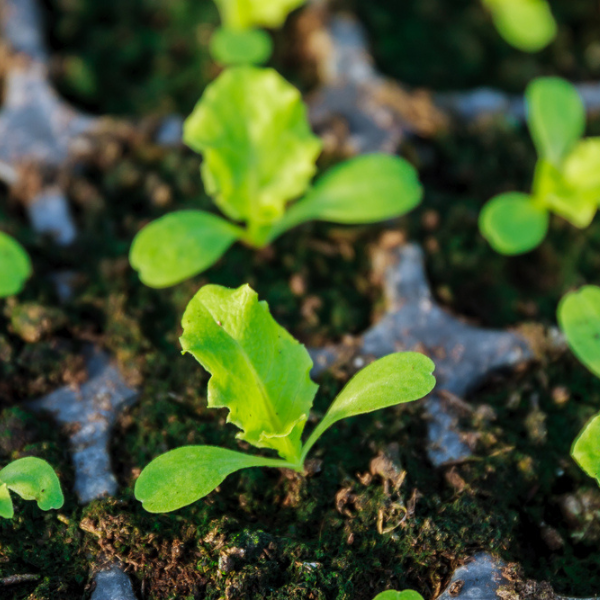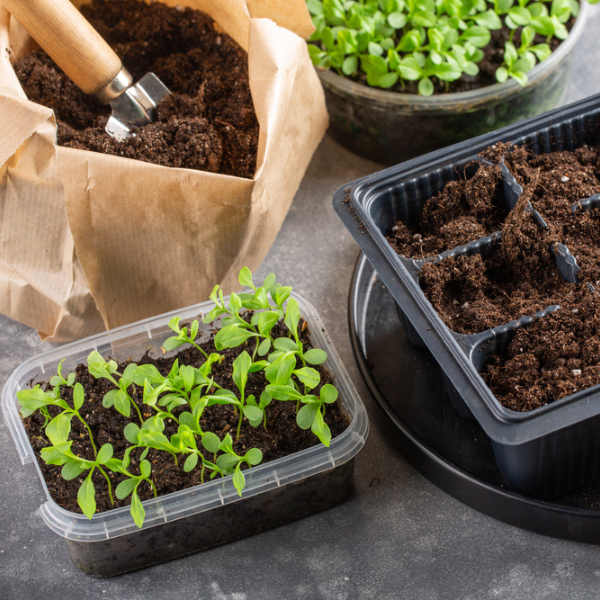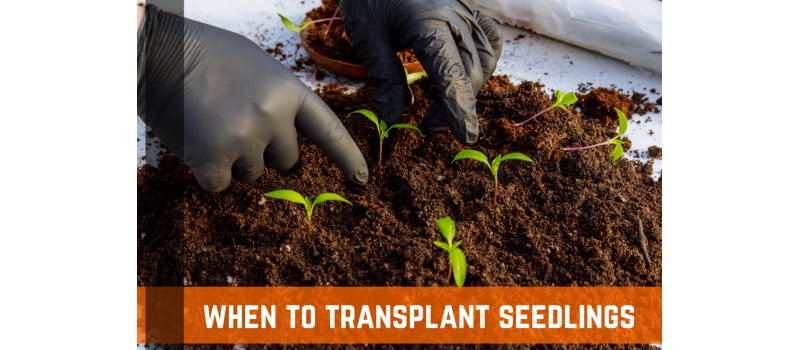Transplanting seedlings might seem like the first big hurdle of the growing season, and making sure you give them a fighting chance is the key to a healthy yield.
Fostering baby plants can be incredibly rewarding, especially because you are taking them from seed all the way to a mature plant. But that journey can have its difficulties. And learning how to transplant seedlings isn't always as straightforward as you may think.
This is the only guide to transplanting you'll need, so without further ado, let's get into it!
When to Transplant Seedlings
Different plants have different transplanting requirements. Some plants, like spinach and collard trees, are cool-season crops, which means you should plant them before it gets too warm outside. Other plants, like tomatoes and peppers, will struggle in cooler temperatures, and shouldn't be transplanted too early!
The key takeaway is to not rush it. Earlier isn't always better and cooler temperatures will often slow the growth of your plants. Check whether your plant is a heat lover or a cool-season grower. Keep your heat-loving plants inside until nighttime temperatures stay consistently above 60°F.
Monitor your local forecasts for this. If there's an imminent cold snap, hold back on the transplanting process until the weather is more consistent. If you've started your plants from seed, keep track of both when you start them and when you transplant them.

How to Transplant Seedlings
You may opt to transplant your seedlings into larger pots or straight into the garden. We'll go through both processes here. Remember, you shouldn't start your seeds in a large pot to negate having to transplant them. Seedlings need smaller spaces to grow, otherwise, they won't be able to access important nutrients.
Transplanting Into the Garden
Your soil may have become hard and compacted over winter, so make sure you loosen and aerate your soil before you plant. Check for rocks or the roots of weeds and remove them. Once the space is clear, turn in plenty of organic matter, around a shovel's depth down. This will help the soil keep moisture while still draining well, as well as give the plants an easier go at rooting.
It's also important to note that anything you can do to raise the temperature of the soil will go a long way towards successful growth! Try some black plastic or other landscaping fabrics over the site to boost your soil temperature a few weeks before you plant. This will help your seedlings adjust to the shock of the new, cold ground.
Both before and after you plant, avoid walking in the area. Stepping on the soil can compact it once again, and you don't want to risk trampling all over your baby plants. Finally, before taking them outside for the last time, make sure you harden your plants off. The process is simple.
Start by giving your plants a thorough watering around 7-10 days before transplanting, before setting them outdoors for a few hours a day in dappled shade. Gradually increase their exposure to sun and wind, and make sure the soil stays moist at all times during this period.
Transplanting Into a Pot
Sometimes you don't want to put a rampant grower into a garden, and mint is a good example of this. In these cases, keeping your plants potted is ideal. You may also want to prick out your seedlings into their own pots before transplanting them a second time into your garden.
The steps are largely the same for moving your seedlings to pots as they are for the garden. The only difference is the soil and location. Seedlings moving into pots that are going to be put outside still need to be hardened off, so don't forget this important step. Keep any dogs or pets away from newly planted trees or flowers.
Be sure to select moisture-retaining but well-draining soil. Seems counterintuitive, but you don't want to waterlog your plants, as nothing will kill them faster.
The Steps to a Successful Transplant
Once your seedlings are good and strong (about double the height of their pots), and the weather is good, you're ready to move your seedlings. The steps are:
- Move aside any mulch
- Dig a shallow hole
- Remove the seedlings from their tray/pot
- Place the seedling into the ground
- Backfill the hole as much as needed
- Center the root ball and fill the rest of the hole
- Gently pack it down
- Using the lowest setting, water your garden
Note: Some plants don't like to have their roots disturbed, so be careful with how you handle seedlings that are root-bound. If they are, use your index finger and thumb to gently loosen them up. Also, when removing the seedlings from their tray, don't just pull them out directly.
Instead, carefully slide them and the soil out of the container, while holding only the root ball. If you need to loosen the soil a bit, pinch the bottom of the container to separate it a little.

Common Questions About Transplanting Seedlings
The gardening process is definitely one that comes with a lot of ups and downs, and each person's journey is going to be slightly different. That being said, there are some common questions that pop up all the time with seedlings. These are some of the more common.
Why Are My Seedlings Falling Over?
Did your seedlings die overnight or suddenly fall over? It's most likely because of damping-off disease. It's not anything you did wrong, and there are some things you can do to help. If you suspect damping-off in a seedling, be ruthless and remove it immediately. It can quickly spread to other plants.
Once a plant has succumbed, you can't save it. But you can prevent it from happening in the first place. The key is to give your seeds a good start in life by keeping their moisture levels in check. Wash pots you suspect had diseased plants in them and don't use heavy garden soil for seeds.
Do You Need to Fertilize Seedlings?
The short answer? Yes! But, as with anything, too much can hurt them. Don't fertilize your seeds before they've sprouted, and when you fertilize, use it at a quarter of its regular strength.
What Happens if You Transplant Too Early?
Your seedlings will be at much greater risk if they're moved too soon. Even hardy plants will probably die if the temperature drops too much or for too long. It's always best to wait a little longer if you're ever unsure. If you do accidentally plant them out too soon, then use row covers or a frost blanket to protect them.
Work With the Right Supplies for Success
Learning about transplanting seedlings is one thing, but having the right tools to do it is another. While you don't need fancy equipment to do a good job, having an excellent set of tools can mean the difference between a successful crop and not, especially if you need to protect your seedlings from inclement weather.
We specialize in gardening equipment and tools for many purposes, so why not come look at what we have? Alternatively, contact us today and we can help solve your gardening troubles.

